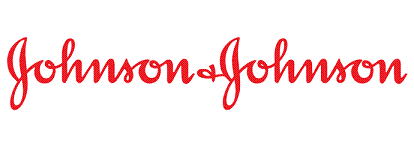Early in Bill Nielsen’s tenure as the director of corporate communication for Johnson & Johnson, Ralph S. Larsen, the CEO to whom he reported, told him, “I believe in sunlight about everything.” Larsen wanted to know the truth about company activities, whether good or bad, in an open way and without embellishment, and offered his assistance to Nielsen. From the start, then, Nielsen knew that the CEO would support him as long as he, Nielsen, was honest and direct.
New to the company in the late 1980s, Nielsen soon discovered that none of the benchmarking studies about corporate communication could provide a model for Johnson & Johnson’s corporate communication function, because its culture is unique. As he explained to us: “Johnson & Johnson is a consensus management organization, a culture of shared understanding about how to run the business, not a culture of elaborate rules.” Building consensus–rather than imposing one’s formal authority and evoking rules – characterizes the way that work is done even at the most senior level of the organization.
Along with a culture of consensus building, Johnson & Johnson has a decentralized structure on which it places a very high value. Decentralization is so important a value that it is inscribed in one of the company’s rare written statements about the company’s strategic direction and is held in high regard as a primary source of productivity and innovative ideas. As further indication of the importance of this value, all strategic planning occurs at the operations level where senior managers make financial forecasts that are then rolled into an overarching corporate plan. How, then, is Nielsen able to help craft a cohesive voice for the company while he has no control over its parts and pieces, nearly 200 autonomous operating companies? To build consensus, Nielsen chairs a monthly Public Affairs Advisory Group. The group is composed of everyone at headquarters who has responsibility for external constituencies, the heads of the public relations groups at the major operating units and such corporate staff functions as regulatory actions, investor relations, legal, advertising, and environmental safety and health. Discussion ranges from what’s in the news that may concern Johnson & Johnson’s reputation to investor relations, corporate philanthropy, and new legislation.
In addition, despite the large number of operating companies, Johnson & Johnson has created a climate of understanding and cohesiveness among internal constituencies around a set of values stated in the Credo, including the importance of reputation. As Nielsen has described this, “The key to Johnson & Johnson’s global standing is the strength of its reputation in the United States.” He, then, gives this value a central place in the work of the division he runs. The division is in charge of tracking issues that make up corporate reputation, such as the company’s core messages about the quality and integrity of its management, products and services; its use of corporate assets, financial soundness, and value as a long-term investment; its innovation; its community and environmental responsibility; and its ability to attract, develop, and keep the brightest and most talented people. Operating managers are encour aged to contact the corporate communication group when issues arise in the operating unit that can potentially affect how people regard the cooperation For any issue below that on the radar screen, Nielsen’s group does not have to be contacted; rather, the individual companies decide on their own about such matters. As he explained to us, “If we put out a rule, the whole organization would come to a crawl. It comes down to individual judgment, lots of one-on-one talk, and meetings between me and other managers.” Johnson and Johnson has taken first place in the annual reputation survey conducted by the market research firm of Harris Interactive and the Reputation Institute since the inception of the survey in 1999.In other words, Johnson & Johnson is the most highly regarded company in the United States.
Building relationships with senior management also facilitates the work of Nielsen’s group. Of the 100,000 employees at Johnson & Johnson, about 18,000 are managers. When a new operating manager comes on board, Nielsen will send a note, phone, or send an e-mail, saying “Please stop by next time you’re in New Brunswick.” The manager soon learns that Nielsen has the ear of the CEO and can lobby for ideas internally. In addition to face-to-face communications with senior managers Nielsen has revamped the management magazine, Worldwide News Digest, to reflect senior management’s concerns with business issues of strategic importance. Rather than presenting “show-and-tell” anecdotal information, he places emphasis on stories that affect business development.
